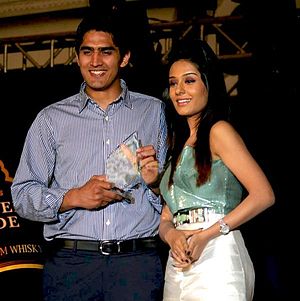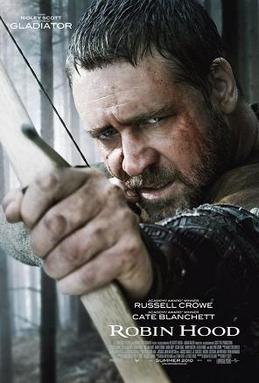 Image via Wikipedia
Image via WikipediaYou would be hard pressed to point out Baraut on the map of India. Chances are you've never been there. Or even heard of it. Regardless, the residents of this small town in Uttar Pradesh, around 60 km askew of New Delhi, would have forgiven you your ignorance till a few weeks ago, as their favorite son, wrestler Rajiv Tomar, was well on track to realizing his medal dreams at the upcoming Commonwealth Games (CWG). But that dream has since turned spectacularly sour, thanks largely to the combined incompetence and general apathy of the Sports Authority of India (SAI) and the country’s Wrestling Federation (WFI), both set up to nurture sporting talent, but whose general carelessness and lack of any foresight have put paid to many a sporting dream, a result sharply in contrast to their purpose.
Tomar’s story is not only a shocking indictment of the state of general disrepair of our sports governance, but also one of hopelessness that comes from being associated with a sport other than cricket in this country. The incident was widely covered by the media, and this sporadic
coverage will eventually do irreparable damage to Tomar. Where tomes are written about our underachieving and often bratty cricketers and where Yuvraj Singh’s many romantic dalliances generate as much front page copy as food inflation or political machinations, what hope can there be for a poor wrestler? He finds mention only when he fails a dope test in the wake of a much publicized (for all the wrong reasons) international event. Tomar’s only error appears to have been to consult a doctor when he came down with flu. The medication he took for his ailment turned up a banned substance, and as per the prevailing guidelines, he stands suspended. Here is an ‘Arjuna’ awardee wrestler who is perhaps the country’s best medal hope in the 120-kg freestyle category, and what fate befalls him? He falls victim to complete negligence from a wretched administrative body set up precisely to nurture and develop him. The WFI claims innocence as does the SAI. Neither perhaps found a break from the constant bickering and internal politics that seem to run deep in any sort of administration in India, to actually have the time and inclination to guide and monitor the athlete. It is quite possible that the unfortunate wrestler did not even have an updated list of banned substances as issued by WADA, and was quite possibly met with ignorance from the sports authorities as well. The doping malaise is easily avoidable if the athlete wishes to stay clean and country’s foremost athletes have been failed by their very own. Fellow wrestlers Sumit and Mausam Khatri, also banned, are distraught as well. It is not always that they get to compete in international events of the scale of the CWG, and now they will watch from the sidelines. Worse still, history might end up remembering them for this alleged misdemeanor.
Does the name Monika Devi ring a bell? This weightlifter was declared to have failed a doping test just before departing for the Beijing Olympics in 2008, only to be cleared a few days later, but not before her dream of participating in the Olympics was scuttled. She almost gave up
the sport as a result. The media went to town with her dope test failure, but weren’t as vocal in following up with the story of her innocence. These are sportspersons who are time and time again expected only to participate and not win. These are sportspersons who walk miles to any sort of sporting infrastructure to practice, on a daily basis. These are sportspersons who brave a complete lack of opportunity during their growth phases and still win medals for the country. These are sportspersons who take up athletics and persevere, knowing full well, that the best that they can hope for is a passing mention in the back pages of a newspaper, should they win anything on an international level. These are sportspersons who have achieved success in their chosen spheres in spite of the system and not because of it. These are sportspersons who know they will disappear into thankless history, and these are also men and women who also deal with complete ignorance and indifference from the general sport enthusiast in the country. But they
continue to find the immense strength to carry on regardless. This needs to be respected. This needs to be celebrated. This exemplary courage must resonate with the rest of the country. But India seems to have moved on. The values of the post ‘91 generation seem to have been irrevocably altered. As long as we remain besotted with IPL parties, inconsequential ODIs and more burnout-inducing T20 tourneys with all their trappings of glamour, we will never stop to
notice how Monika Devi has fought her way back from the abyss of despair and depression to rise again to be regarded as India’s best bet for a medal in the upcoming CWG. The fact that no one pays any attention is the root cause of this pathetic situation our athletes find themselves in. And for the sake of sport in India, the media must also start to care more. It is time to stop
remembering Rajiv Tomar for failing a dope test; rather it is time for him to be remembered for being the holder of a record 35 Bharat and Hind Kesari titles.
It is perhaps encouraging that athletes such as Saina Nehwal and Vijender Kumar have seen some mainstream recognition in the wake of their successes. But they are exceptions to the rule. The track and field and ‘akhara’ types continue to be mainstream pariahs, forgotten and ignored by most. It is time this changed and we cleaned up our act, not only in terms of administration and governance of sports in this country, but also in terms of more positive media coverage. Talent, blood, guts, and courage are aplenty, but it needs to be given a chance. One need not reiterate that there are indeed many Indias. Indias divided by rupees in the wallet, Indias divided by language, caste, creed and community. Indias divided by religion. We don’t need an India divided by sport.
Cheers!
Abhishek.
This article first appeared in the October issue of 'KINDLE'.



















